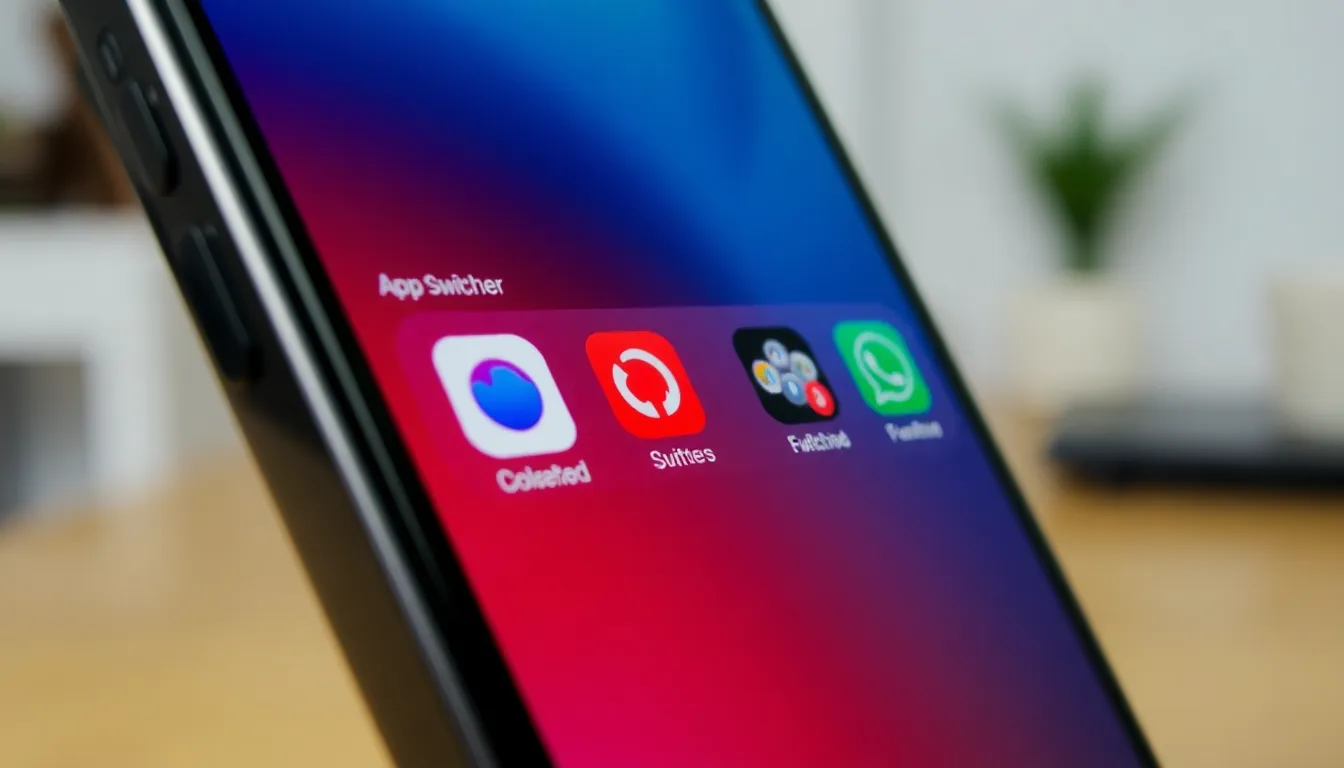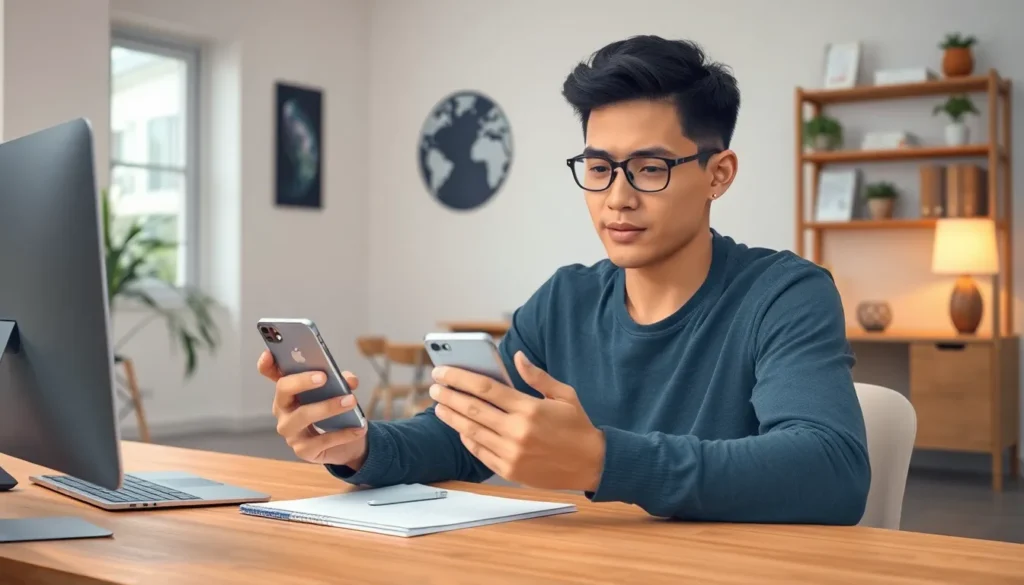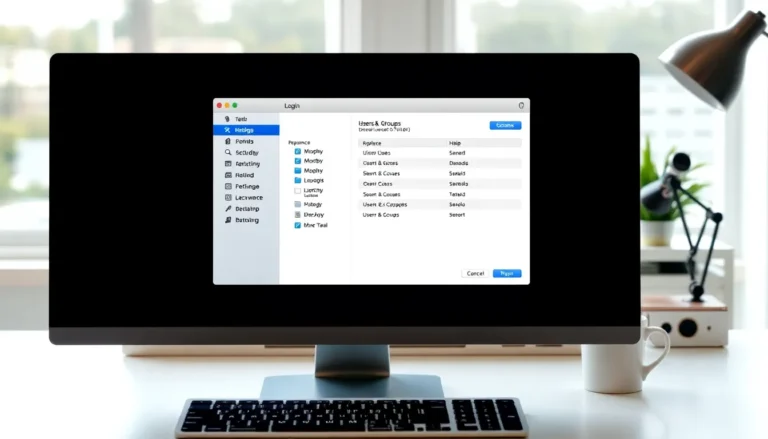Table of Contents
ToggleEver feel like your iPhone’s multitasking abilities are working overtime while you’re just trying to enjoy a little peace and quiet? With a sea of apps open, it can feel like a digital circus in your pocket. Not only does this slow things down, but it also drains your battery faster than you can say “low power mode.”
Understanding App Management on iPhone
Managing apps on an iPhone is crucial for optimal device performance. Closing apps can enhance multitasking efficiency and improve battery life.
Importance of Closing Apps
Closing apps frequently keeps the iPhone running smoothly. Excess open apps consume RAM and slow down the device, leading to frustration during usage. Battery life suffers when multiple apps remain active, as they perform background tasks. For instance, studies show that leaving too many active apps can decrease battery life by over 20%. Prioritizing app management promotes a seamless experience, allowing users to focus on their tasks without unnecessary interruptions. Regularly closing unused apps can prevent performance issues and ensure the device works optimally.
Common Misconceptions
Many users believe that simply minimizing apps saves resources, but this isn’t accurate. When apps are minimized instead of closed, they continue running background processes. Closing apps doesn’t remove them from the system; it halts background tasks that often drain resources. Another misconception is that frequent closure harms the device. In reality, it’s often beneficial to close apps if they’re not in active use. Users should also be aware that some apps require background activity to function correctly, like music or navigation applications. Understanding these dynamics empowers users to make better decisions about app management.
How to Close All Apps on iPhone at Once

Managing open apps on an iPhone significantly affects performance and battery life. Closing apps can enhance multitasking efficiency and prolong battery usage.
Using the App Switcher
Utilize the App Switcher for a quick way to close multiple apps. Swipe up from the bottom of the screen and pause in the middle to access the App Switcher. Viewing all open apps becomes easy, allowing users to see which ones are currently active. Users can swipe left or right to navigate through their apps. To close an app, simply swipe it up and off the screen. This method quickly reduces the number of active apps, leading to increased performance.
Activating and Using Background App Refresh
Background App Refresh can manage app activity based on user preferences. It allows apps to update content in the background, but not all apps need this feature. Access this option through Settings, then navigate to General and select Background App Refresh. Users can choose to enable it for specific apps or disable it entirely. Disabling unnecessary apps can reduce strain on battery life and memory. Understanding which apps benefit from this feature helps optimize device efficiency.
Alternative Methods to Manage Apps
Managing apps effectively can enhance an iPhone’s performance. Beyond the native features, users can explore additional methods to close apps efficiently.
Using Third-Party Apps
Third-party applications offer innovative solutions for managing multiple open apps. Some of these apps provide customizable features tailored for multitasking. Users can find applications that allow bulk closing or management of background processes, significantly simplifying the task. Popular options include tools designed for optimizing device performance while ensuring app visibility. Checking user reviews can help identify which apps best suit individual needs. Those who prioritize efficiency often find these alternative tools invaluable.
Automating App Management
Automating app management streamlines the process further. Certain settings within iOS enable automatic closing of unused apps with specific configurations. Users can toggle features like Low Power Mode to limit background activity. Enabling these functions reduces the number of active apps without extra effort. Scheduled time for app management can also improve device efficiency. Streamlining this approach lets users focus on essential tasks without distractions from unnecessary applications. Making the most of these settings leads to smoother operation and better battery usage.
Best Practices for App Management
Effective app management sustains an iPhone’s performance and enhances user experience. Regular attention to open applications helps maintain device efficiency and battery longevity.
Regular Maintenance Tips
Perform regular app reviews to identify unnecessary applications. Close apps that aren’t in use to free RAM and maintain optimal performance. Use the App Switcher frequently for convenience. Enable Low Power Mode during low battery to minimize background activity. Adjust Background App Refresh settings selectively; disabling it for non-essential apps conserves battery life. Schedule routine checks on app usage and performance metrics to stay informed about resource demands.
When to Close Apps
Close apps when experiencing sluggish performance or battery drain. Monitor applications that consume more resources during multitasking. Identify apps that haven’t been used recently and shut them down to enhance efficiency. Apps like music or navigation can remain open, as they require background functionality. Consider ending applications before engaging in battery-intensive activities, such as gaming or video streaming, to maximize device performance. Staying proactive about app management supports user satisfaction.
Managing apps on an iPhone is crucial for maintaining optimal performance and battery life. By regularly closing unnecessary apps and utilizing features like the App Switcher and Background App Refresh settings, users can significantly enhance their device’s efficiency. This proactive approach not only prevents sluggishness but also prolongs battery longevity. Staying mindful of app management ensures a smoother multitasking experience and allows users to focus on what truly matters. Embracing these practices leads to a more satisfying and efficient iPhone experience.




